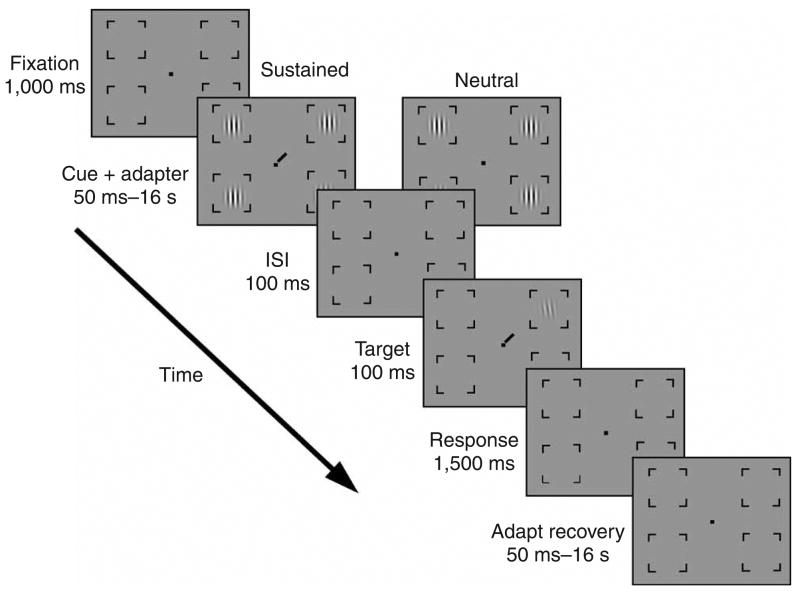Figure 1.
The trial sequence. In each trial, observers viewed a fixation point, followed by four vertically oriented adapter Gabor gratings (2° × 2°; 4 cycles per deg; 70% contrast) positioned at the four possible target locations (7° eccentricity). To minimize luminance adaptation and maximize contrast adaptation, flickering gratings were used (counterphase modulated at 8 Hz). Simultaneous with the adapter gratings, one of two types of cues appeared: a sustained attentional cue or a neutral cue, which served as a baseline. The sustained attentional cue was a line at fixation, directing observers to attend to the location of the upcoming target. The neutral cue was a dot at the center of the screen, which gave no information about the upcoming target location. The display duration of the cue + adapter varied from 50 ms to 16s. After a brief blank interval (interstimulus interval, ISI), the target stimulus appeared—a grating similar to the adapter, tilted ±3° from the vertical. Observers performed a two-alternative forced-choice orientation discrimination task. To equate location uncertainty between the precued and neutral conditions, we presented a cue at the center of the screen in both conditions; this indicated the target location and appeared simultaneously with the target. Contrast thresholds for the target stimulus were obtained at 75% accuracy using a staircase procedure. Nine thresholds were obtained per condition. To ensure observers’ uninterrupted fixation, eye movements were monitored by infrared camera. We discarded those (rare) trials in which breaks from fixation were detected (< 1%).

